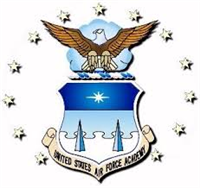What do they do?
Perform surveying and mapping duties, usually under the direction of an engineer, surveyor, cartographer, or photogrammetrist, to obtain data used for construction, mapmaking, boundary location, mining, or other purposes. May calculate mapmaking information and create maps from source data, such as surveying notes, aerial photography, satellite data, or other maps to show topographical features, political boundaries, and other features. May verify accuracy and completeness of maps.
Also known as:
Aerotriangulation Specialist, Engineering Technician, Geospatial Analyst, Mapping Editor, Mapping Technician, Photogrammetric Compilation Specialist, Photogrammetric Technician, Stereoplotter Operator, Survey Technician, Tax Map Technician
-
0.8%
Change
Ranks #57 in job growth rate150Job Openings
Ranks #16 in net job growth
-
United States Military Academy
West Point, NY
-
United States Air Force Academy
USAF Academy, CO
-
University of California-Los Angeles
Los Angeles, CA
-
Ohio State University-Main Campus
Columbus, OH
-
The University of Texas at Austin
Austin, TX
Looking for colleges that offer a specific major? Use the College Match Tool to find your best-matched schools and discover your estimated Net Price!
- Doctorate or Professional Degree (<1%)
- Master's degree (2%)
- Bachelor's degree (9%)
- Associate's degree (22%)
- Some college, no degree (33%)
- High school diploma equivalent (28%)
- Less than high school diploma (5%)
Most Popular Majors that prepare Surveying and Mapping Technicians
-
#1
-
Degrees Granted
2,816
-
Female Students
1,141
-
Male Students
1,675
-
Median Starting Salary
$43,800
-
-
#2
-
Degrees Granted
755
-
Female Students
219
-
Male Students
536
-
Median Starting Salary
$43,800
-
-
#3
-
Degrees Granted
161
-
Female Students
17
-
Male Students
144
-
Median Starting Salary
$56,989
-
People in this career often have these skills:
- Reading Comprehension - Understanding written sentences and paragraphs in work-related documents.
- Critical Thinking - Using logic and reasoning to identify the strengths and weaknesses of alternative solutions, conclusions, or approaches to problems.
- Mathematics - Using mathematics to solve problems.
People in this career often know a lot about:
- Computers and Electronics - Knowledge of circuit boards, processors, chips, electronic equipment, and computer hardware and software, including applications and programming.
- Geography - Knowledge of principles and methods for describing the features of land, sea, and air masses, including their physical characteristics, locations, interrelationships, and distribution of plant, animal, and human life.
- Mathematics - Knowledge of arithmetic, algebra, geometry, calculus, statistics, and their applications.
- English Language - Knowledge of the structure and content of the English language including the meaning and spelling of words, rules of composition, and grammar.
- Engineering and Technology - Knowledge of the practical application of engineering science and technology. This includes applying principles, techniques, procedures, and equipment to the design and production of various goods and services.
People in this career often have talent in:
- Near Vision - The ability to see details at close range (within a few feet of the observer).
- Written Comprehension - The ability to read and understand information and ideas presented in writing.
- Mathematical Reasoning - The ability to choose the right mathematical methods or formulas to solve a problem.
- Problem Sensitivity - The ability to tell when something is wrong or is likely to go wrong. It does not involve solving the problem, only recognizing that there is a problem.
- Deductive Reasoning - The ability to apply general rules to specific problems to produce answers that make sense.
- Information Ordering - The ability to arrange things or actions in a certain order or pattern according to a specific rule or set of rules (e.g., patterns of numbers, letters, words, pictures, mathematical operations).
- Oral Comprehension - The ability to listen to and understand information and ideas presented through spoken words and sentences.
- Oral Expression - The ability to communicate information and ideas in speaking so others will understand.
- Finger Dexterity - The ability to make precisely coordinated movements of the fingers of one or both hands to grasp, manipulate, or assemble very small objects.
People in this career often do these activities:
- Survey land or bodies of water to measure or determine features.
- Evaluate designs or specifications to ensure quality.
- Develop software or computer applications.
- Monitor processes for compliance with standards.
- Create maps.
- Gather physical survey data.
- Operate computer systems.
- Verify mathematical calculations.
- Explain project details to the general public.
- Calculate geographic positions from survey data.
- Assist engineers or scientists with research.
- Prepare maps.
- Document technical design details.
This page includes data from:

 Occupation statistics: USDOL U.S. Bureau of Labor Statistics Occupational Employment Statistics
Occupation statistics: USDOL U.S. Bureau of Labor Statistics Occupational Employment Statistics
 Videos: CareerOneStop, USDOL/ETA and the Minnesota Department of Employment & Economic Development
Videos: CareerOneStop, USDOL/ETA and the Minnesota Department of Employment & Economic Development









